When I showed my newly remodeled living room a few weeks ago, I got a lot of comments. Many were positive and liked the new decor, but many didn’t like the changes at all. I got a lot of ideas from the comments – some I actually liked, such as use a zebra rug instead of the white cowhide. The majority of the negative comments concerned my coffee table, which is actually a side table or small desk.
The negative comments came mainly from those who felt my coffee table was too high and that the room would benefit from and look better if I had a low coffee table or an ottoman where people could put their feet up on it. Well, this is a living room, and I’m not sure people need to put their feet up in there. The main reason I wanted a high tea table is that the ceiling is so high in this room – and I felt a low coffee table or ottoman would accentuate the height. With the tea table, the distance between the ceiling and the floor is closed somewhat. This is also why I hung the chandelier so low – I tried to draw the eye down instead of up. The tea table height is closer to the chandelier than a low coffee table would be – again fooling the eye that the ceiling is not quite so high. But still, in truth, I happen to like high coffee tables, regardless of the ceiling height.
In my family room, where a high ceiling is not an issue, I again opted for a higher than normal coffee table. It’s actually an antique French dough table and it sits several inches above the sofa cushion. Still it was a huge issue with Ben who likes to lie down and watch tv. We had to measure the height of the table and then he had to lie down to test it out before I could keep this table. I had to prove to him that it was low enough for him to sleep and watch tv at the same time – yep.
I’d like to rearrange my family room and put this table in front of the tv and the two large slip covered chairs next to it. This was, the two chairs and table would face the sofa. I think the room would be better balanced this way, but Ben is worried I would pile it high with things, like it is now, and it would block that damn tv. So for now, the table sits in the corner. Before I got the dough table, I had wanted this oval wine tasting table to be my “coffee table” – but it really was too high. I just prefer a high coffee table over a low one.
All this talk of coffee tables got me thinking about them. A major problem with coffee tables is - if you like antiques, you aren’t going to find a “real” coffee table. There just aren’t any.
No coffee table at the Petit Trianon – instead there is a high table, ready for tea.
A Short History of the Coffee Table:
Before the 18th century, tables that were used next to a high-backed settee were either end tables, center tables or tea tables. Once high-backed settees were replaced with lower back sofas, console tables were placed behind the sofa and were used for drinks. The high tea tables were used to place a tea service upon it, but these tables bear no resemblance to today’s low, long or round coffee tables. The first known coffee table was produced in 1868 – though it was 27” high, many inches taller than today’s coffee tables. Lower coffee tables were first used in the Victorian Era through the influence of Japan. Their dining tables became western coffee tables. Besides the low Japanese tables, it wasn’t until the 20th century that the true coffee table came along.
Elsie de Wolfe, early 20th century. As you can see, there are no coffee tables here.
In the 20th century, both the Arts and Crafts Movement and Art Nouveau developed long low tables which are considered precursors to today’s coffee tables. But some historians connect the beginning of the coffee table to fashion magazines published in 1915. Before this time, furniture and tables were used primarily along the perimeter of the room. When these fashion magazines showed a table, similar to today’s coffee table, in the middle of the room, the look took off immediately. People in Europe and the US began to place low tables in front of their sofas instead of behind or next to it. Thus, today’s coffee table was born. Once the coffee table became popular, it was made in the style of other furniture, like Georgian III or Louis XVI. But, there is no period Georgian III or Louis XVI coffee tables. Coffee tables are truly an invention of the 20th century.
So, what do you do if you like antiques and want an antique table with its rich patina to use a coffee table? Since there are no true antique coffee tables, what are good alternatives to the typical wood or glass low coffee table?
Kay O’Toole uses an antique chinoiserie tea table instead of a coffee table.
Here, an antique French side table is used instead of a modern coffee table.
A high French antique end table is used here. When you use a high table like this, you can add a short chair in front – as shown. This owner also layered another shorter table under the higher one. Love this look.
Pam Pierce used a Swedish end table as a coffee table.
Antique chests make are great alternatives to a new coffee table. They add so much rustic texture to a room.
An high end table is used – mixed in with Swedish antique chairs and benches.
Another alternative is an antique bench or footstool.
This high table is the perfect choice for this small settee.
Ethnic tables make wonderful coffee tables.
Mary McDonald used an antique round table instead of a low, rectangular coffee table.
In this house, Mary McDonald used an assortment of ethnic tables and antique benches instead of a new coffee table.
Here Kathryn Ireland used an antique chinoiserie table with a high profile.
In Martyn Lawrence Bullard’s house, is it an antique or a reproduction? Not sure – but the table sits high – right above the sofa cushions.
A great alternative to a glass table is an upholstered ottoman – Alessandra Branca.
At home, Branca uses an assortment of tables – an antique Japanese table and a tole tray.
Here, Suzanne Rheinstein also used an assortment of antique tables in lieu of coffee tables.
An Oriental table is used in Rheinstein’s NY apartment.
Here Rheinstein uses an accent table.
The oval racetrack ottoman designed by Rheinstein – Windsor Smith uses this ottoman aloteeeeeeeeee.
A tufted ottoman – used by Windsor Smith – much more interesting than a glass coffee table.
Windsor Smith – using Rheinstein’s racetrack ottoman.
French wine tables make great coffee tables.
Lynn Von Kersting uses ethnic side tables in her designs.
This red chest is so much more interesting here instead of a traditional coffee table.
It looks like Sheila Bridges used the ottoman from a chaise here. Such a pretty room!
Another chest used in this beach house.
One of my favorite chests ever – Ginger Barber in a Houston high rise. I wish I had this picture without all the writing on it!!!
A large round table is used here, along with a stool from a chaise.
Two sofas share an antique French table here. Pam Pierce.
I love this ottoman covered by a loose tapestry. So pretty.
A small, tall bamboo table – Pam Pierce.
I still love tole trays on stands.
Michael Smith used an Oriental table here.
A Swedish side table adds so much texture and patina.
Here, an end table is used in front of a French settee.
This owner used a chinoiserie desk! Love this!
This red chinoiserie table is actually a reproduction. But it really looks like an antique here.
This tea table doubles as a dining table. The kitchen is located behind the sofa.
John Saladino used three pieces of antique marble to create this coffee table.
Cut down the legs of an antique dining table to create a coffee table with patina and age. Notice how high the table is – several inches above the sofa cushions.
In this French house, the owners used a large chinoiserie chest.
J. Randall Powers used a Melrose House table in this townhouse bedroom.
And he used a Brunschwig and Fils table in the living room.
One or two garden stools are an alternative to a standard coffee table.
Finally, all sorts of versions of the brick layer table is fast becoming THE coffee table to have today – instead of a glass table. The idea is to marry a rustic top with a clean line, iron frame. Here, Michael Smith shows how it is done.
So, what is your favorite coffee table? Do you like a glass or wood coffee table? Or do you like to use an antique chest or table instead? Would you prefer a high table or a low table? A chest or an ottoman??
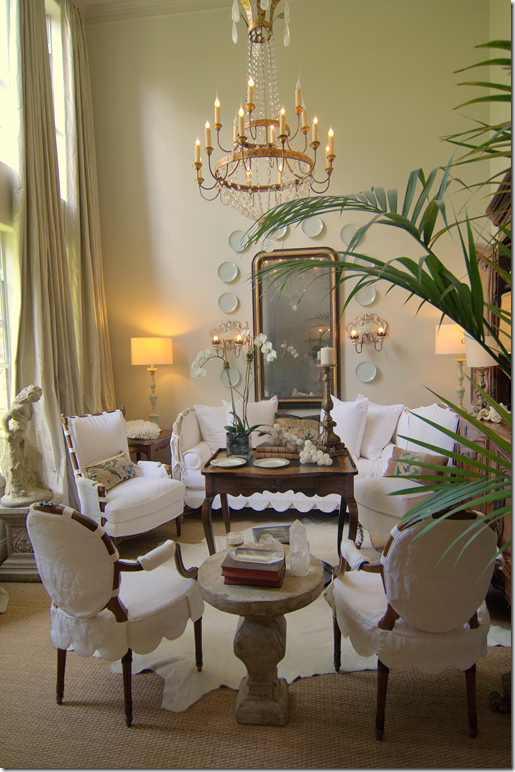

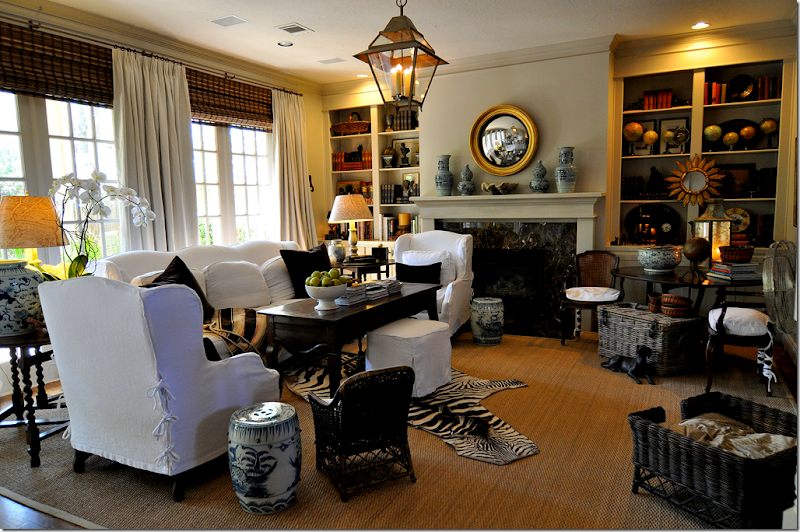
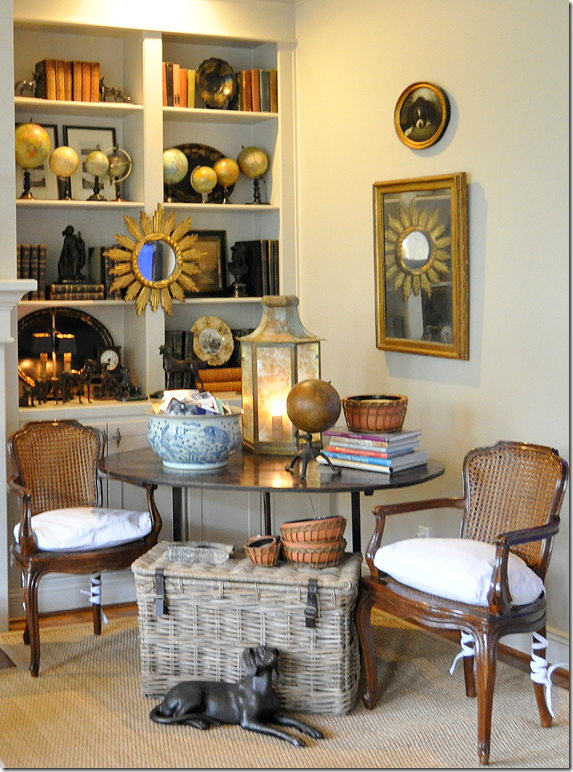

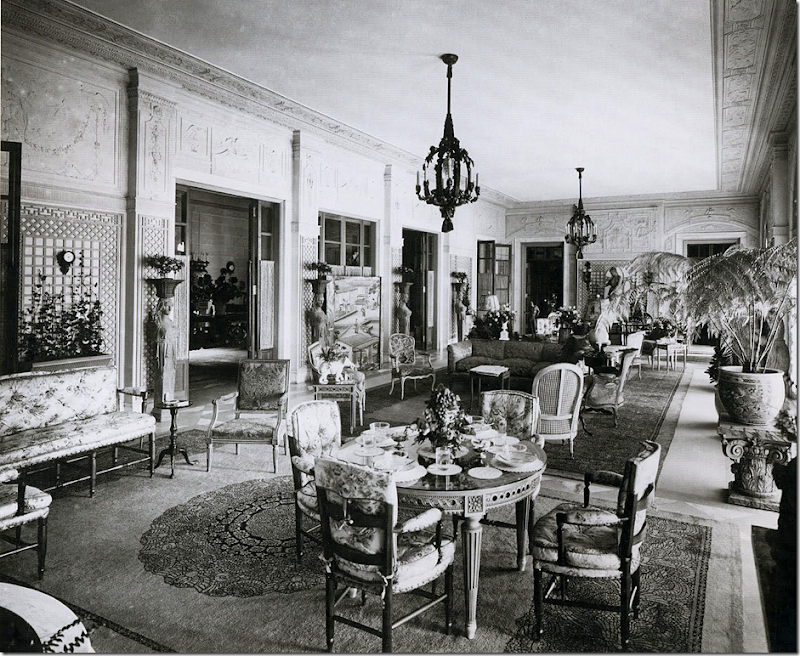


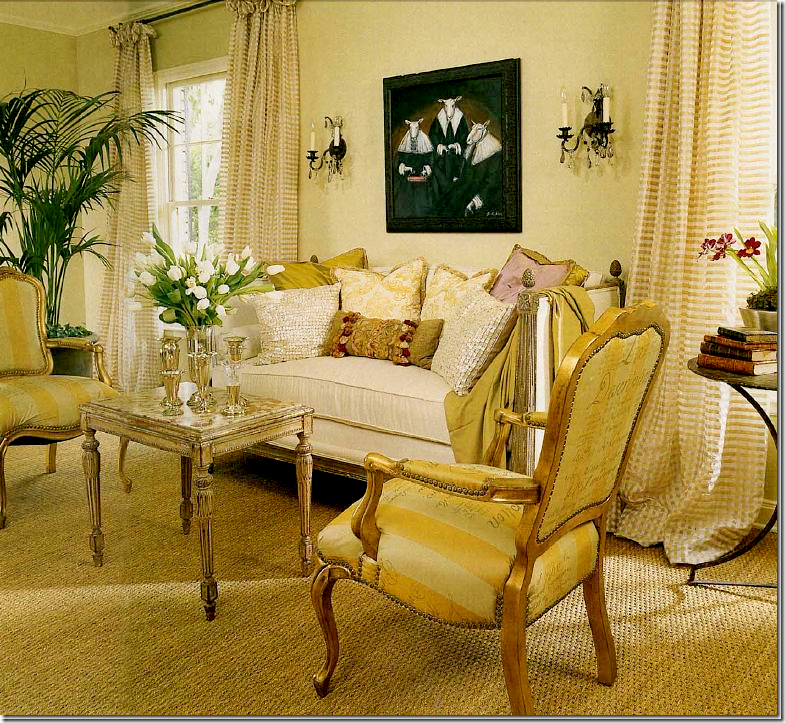
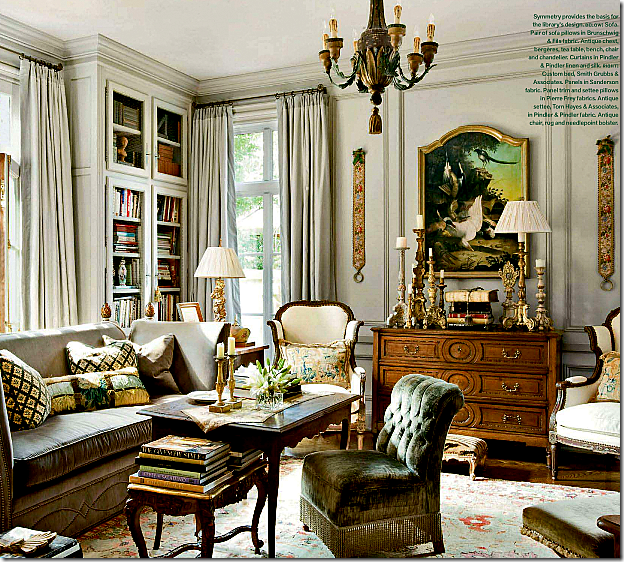
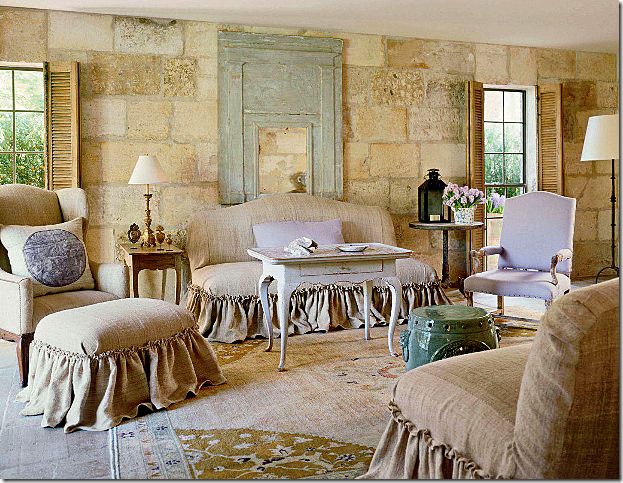

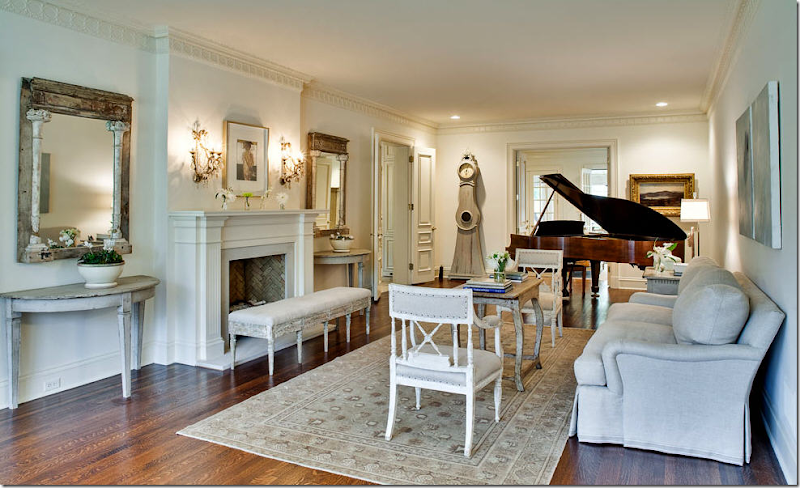
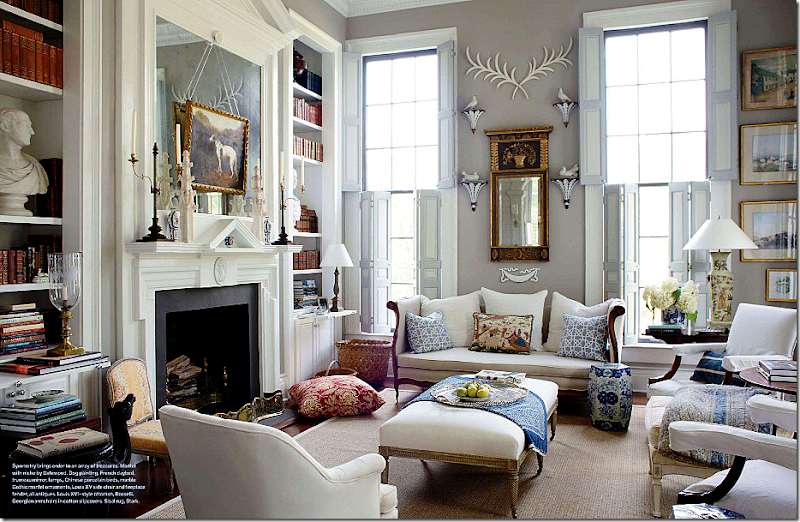

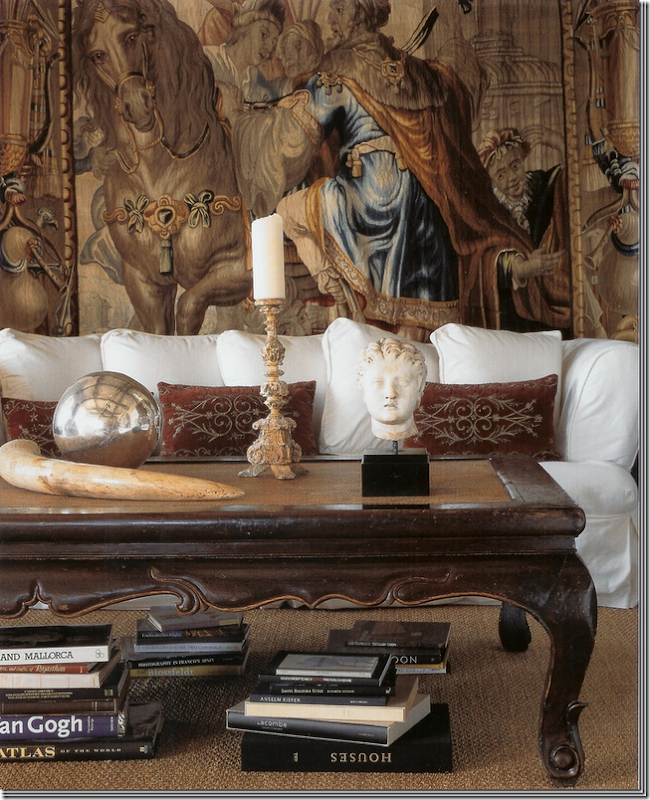
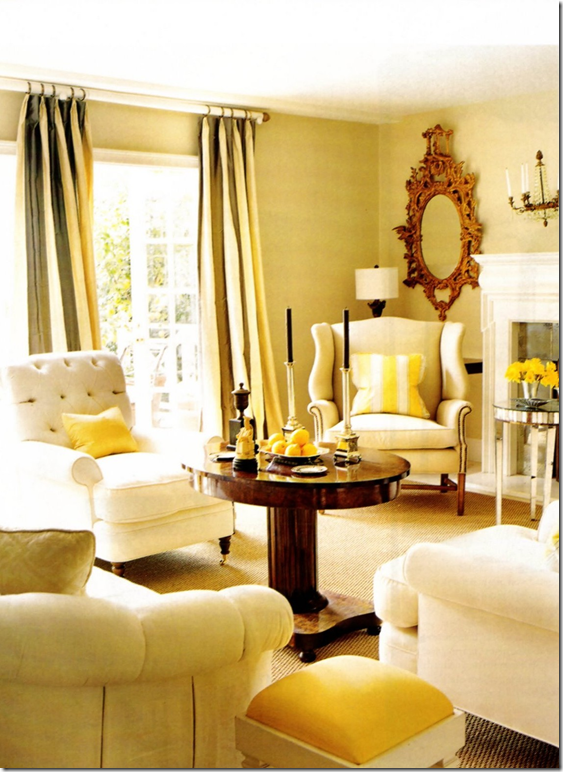
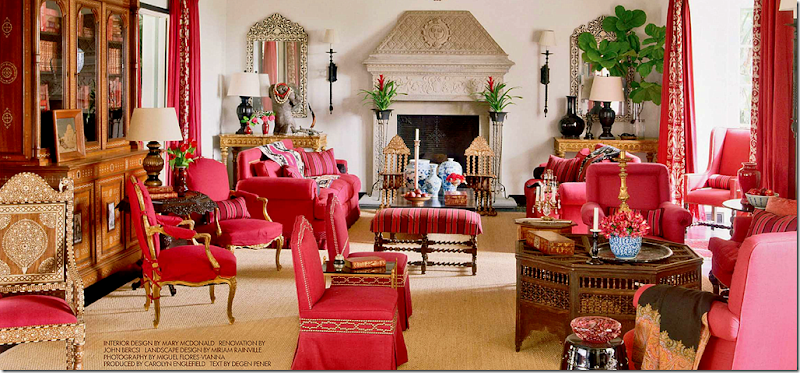
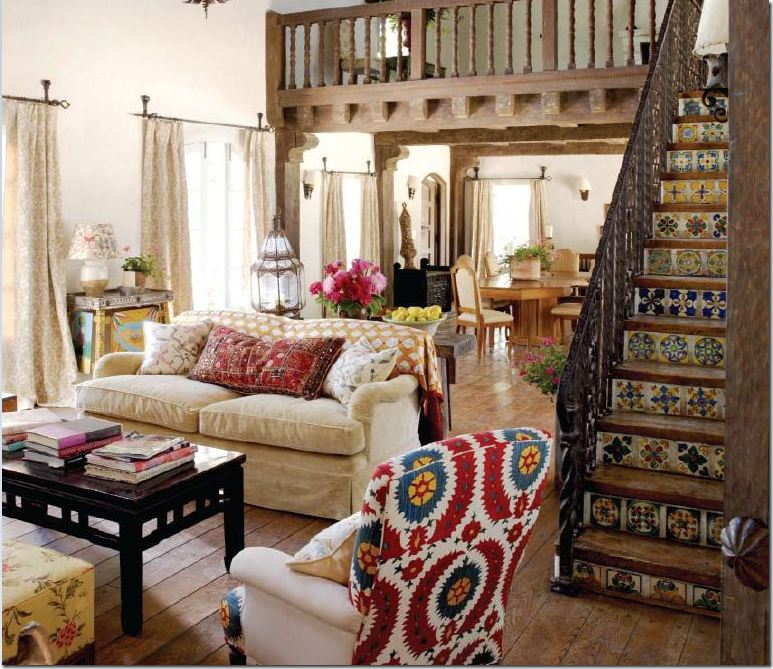
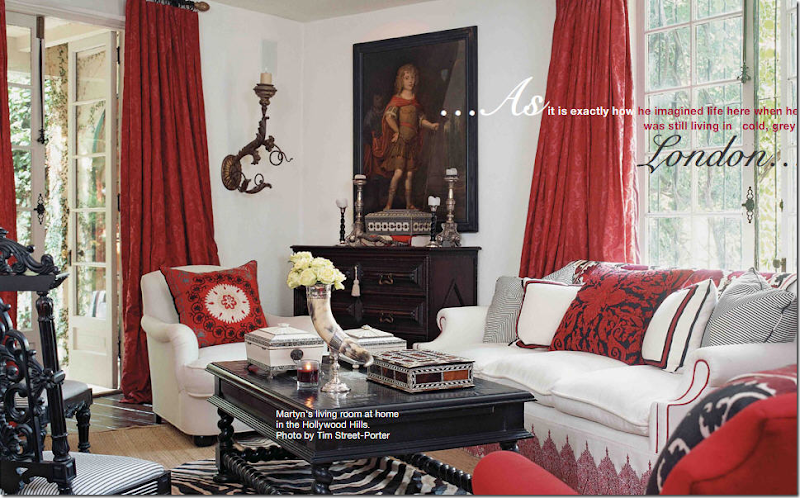
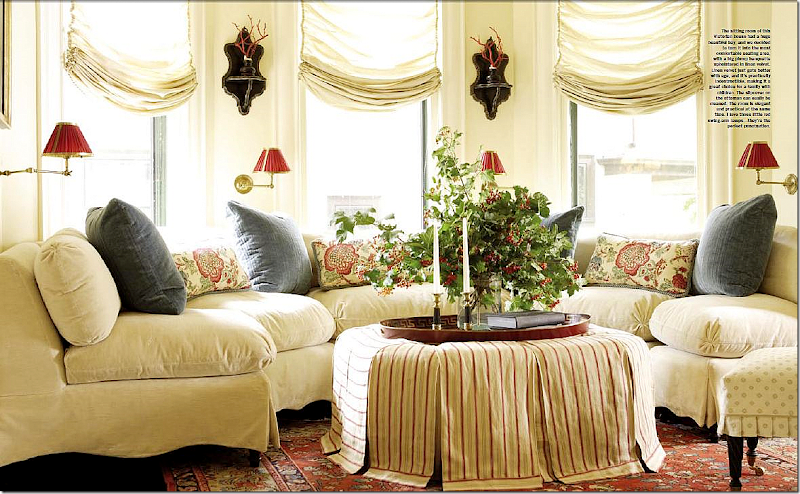
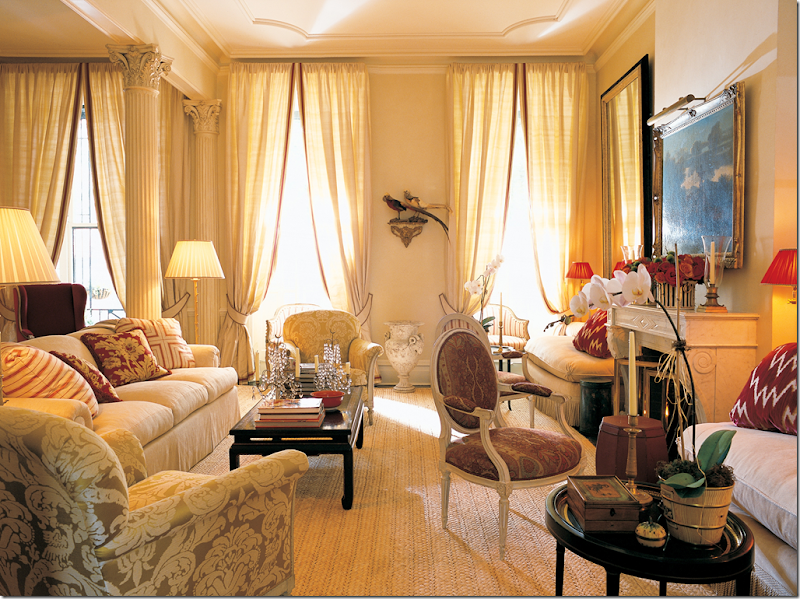


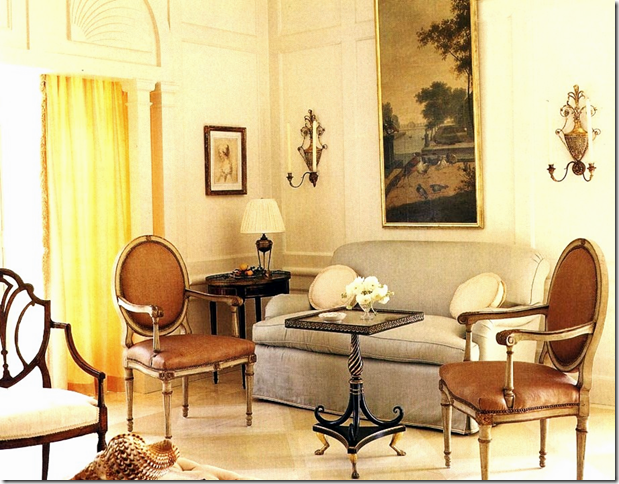
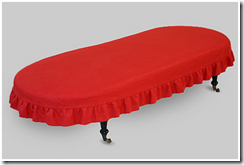
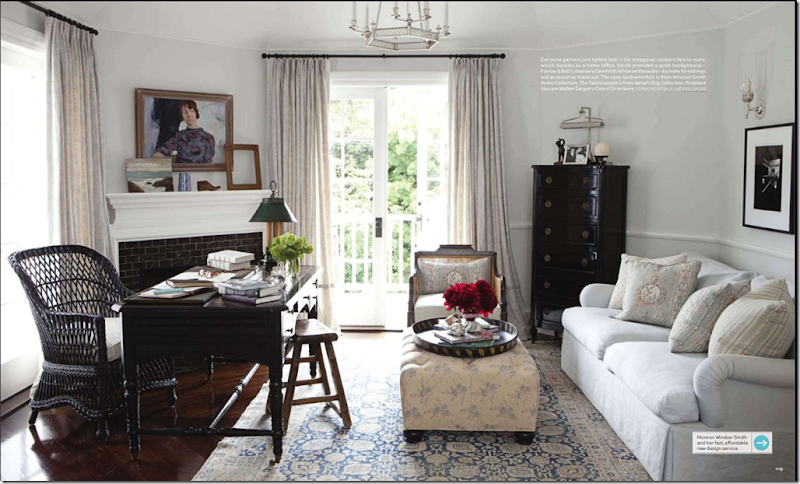
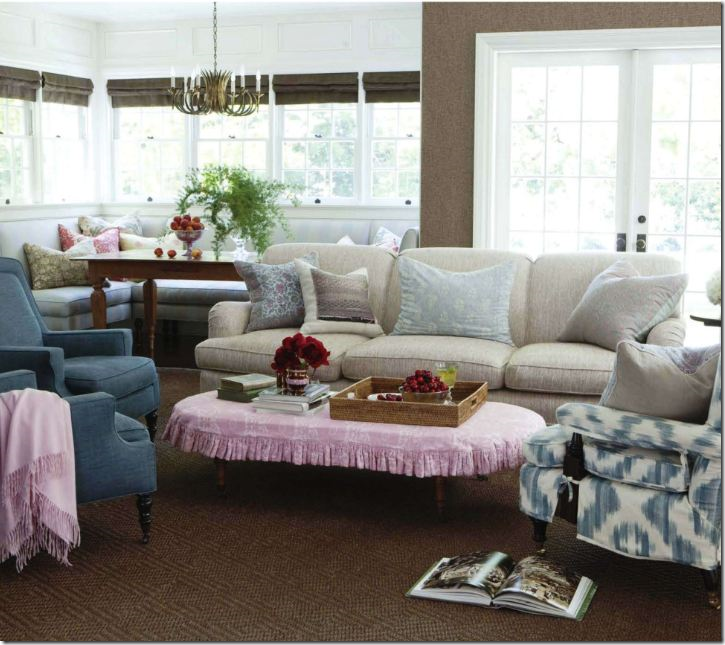
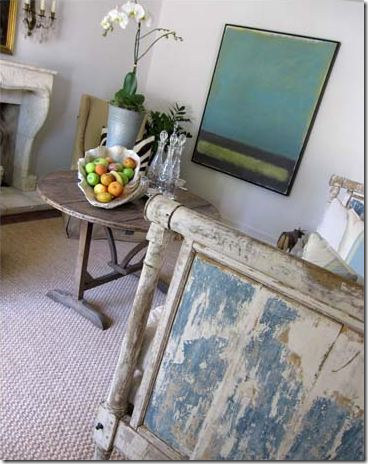

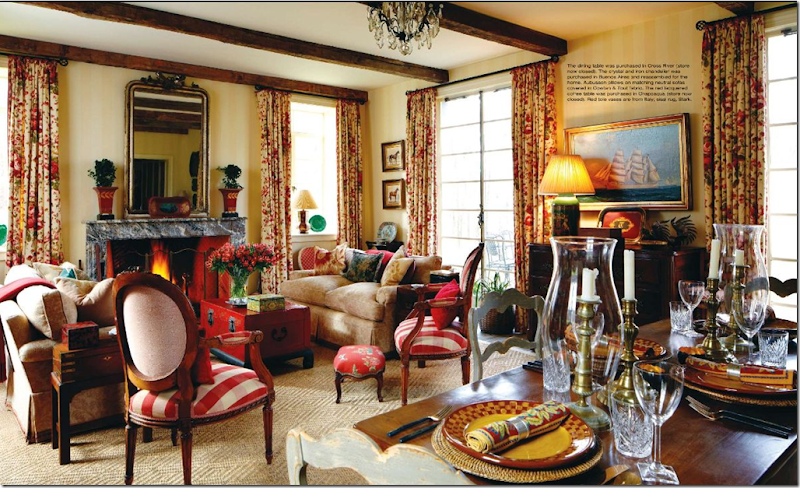
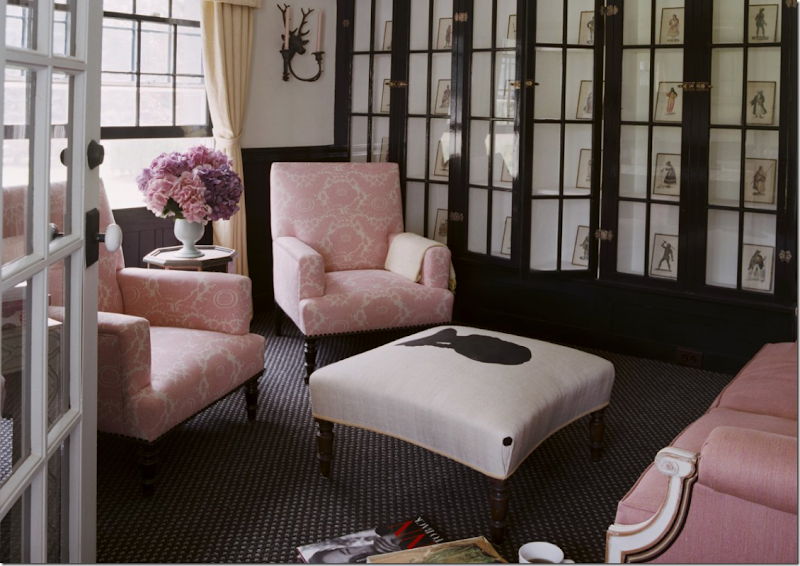

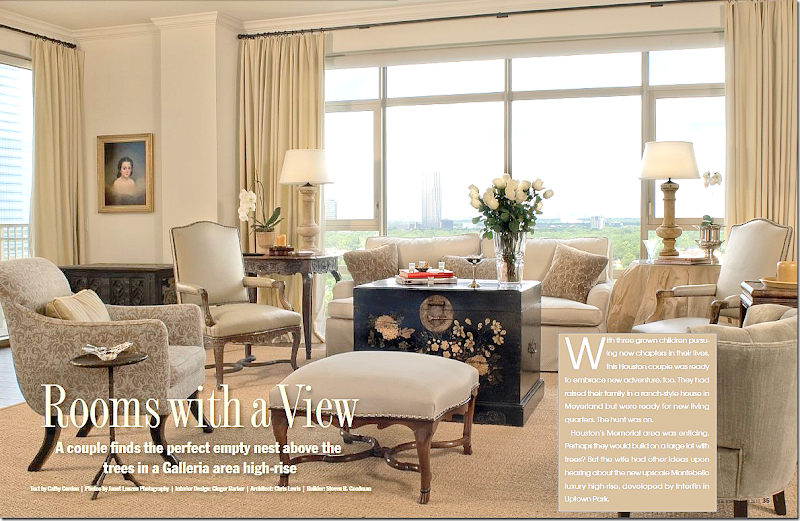
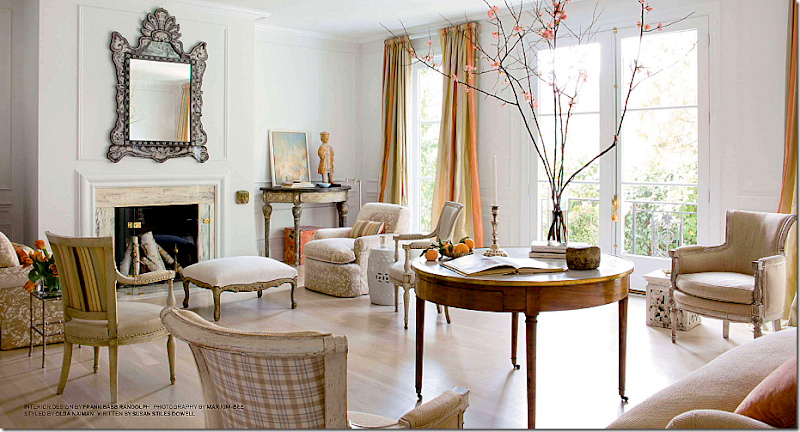





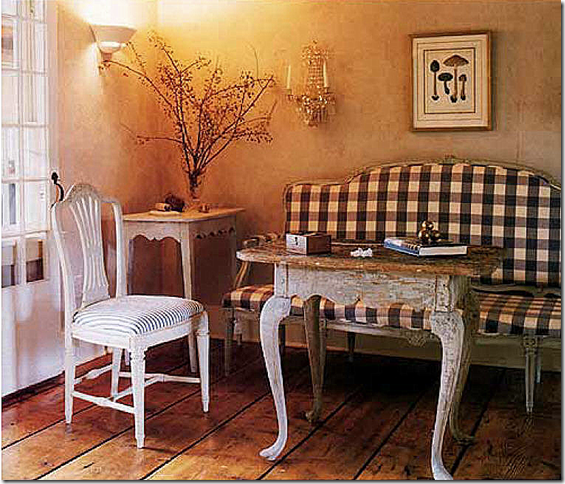
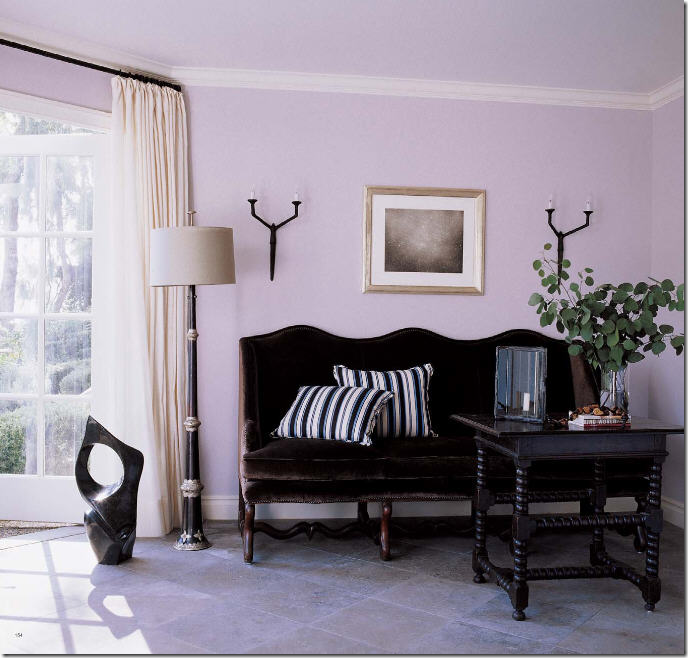


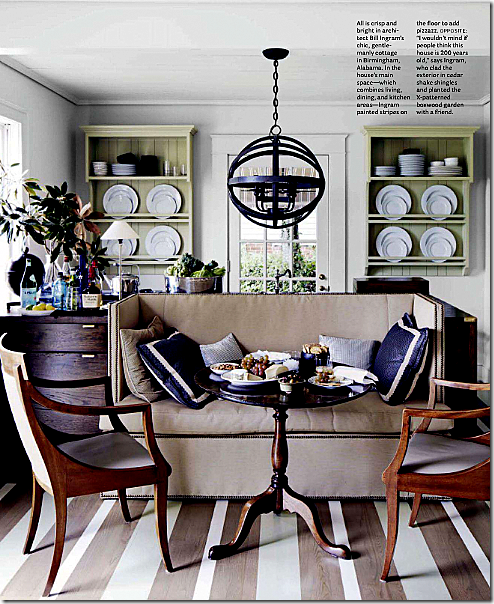
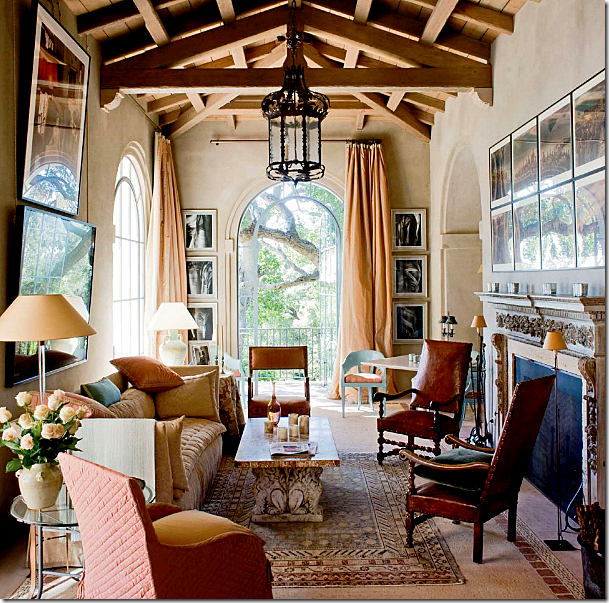
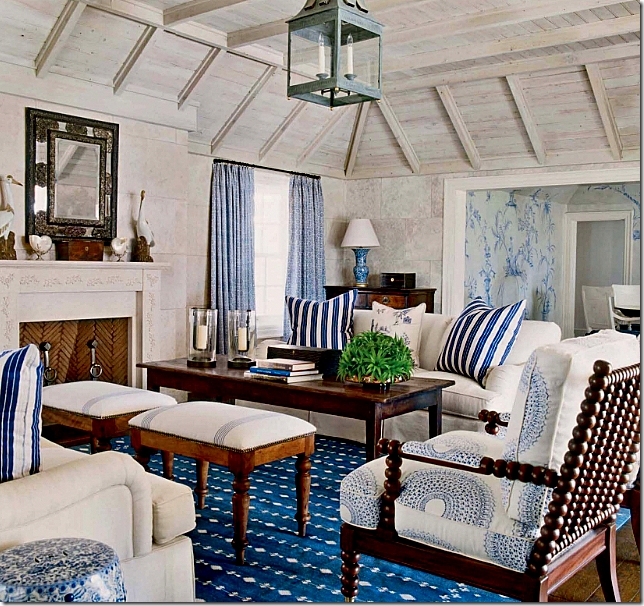
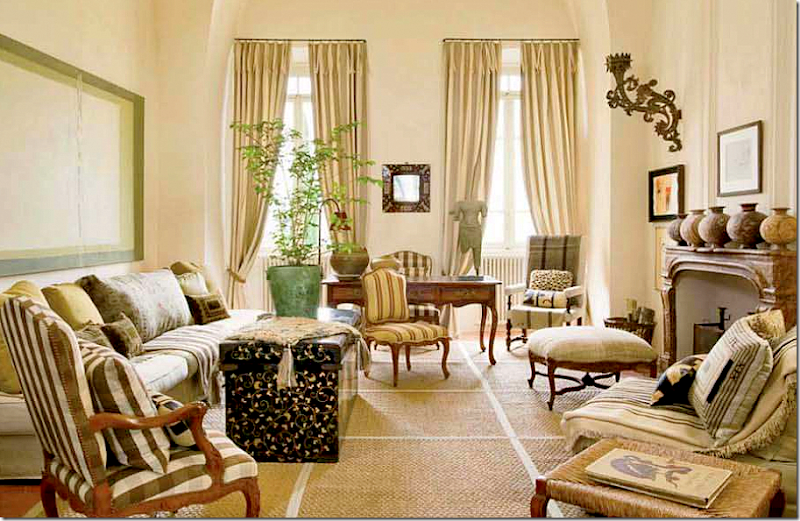
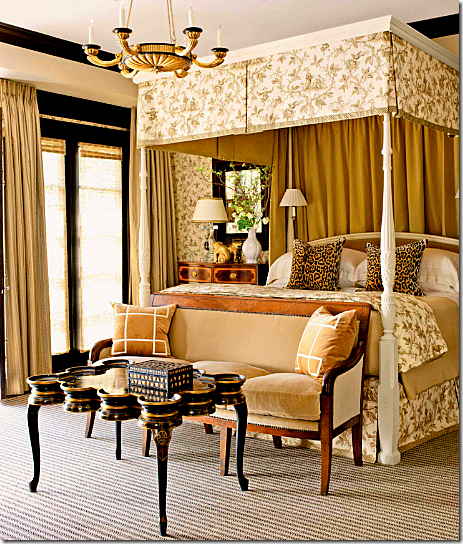
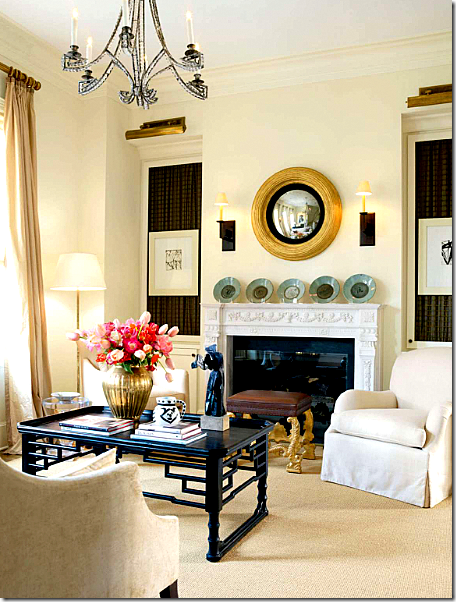
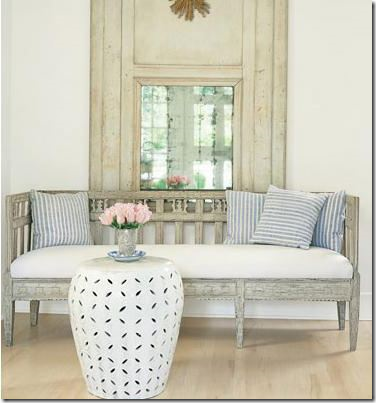

0 Comments:
Post a Comment